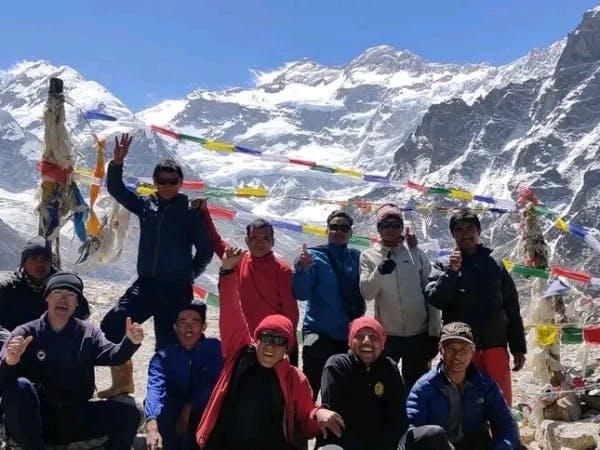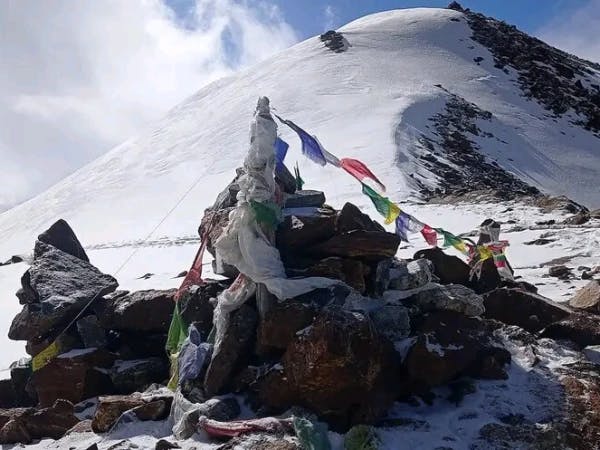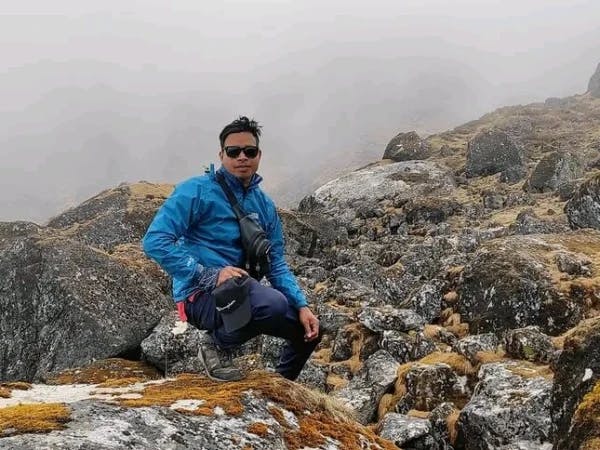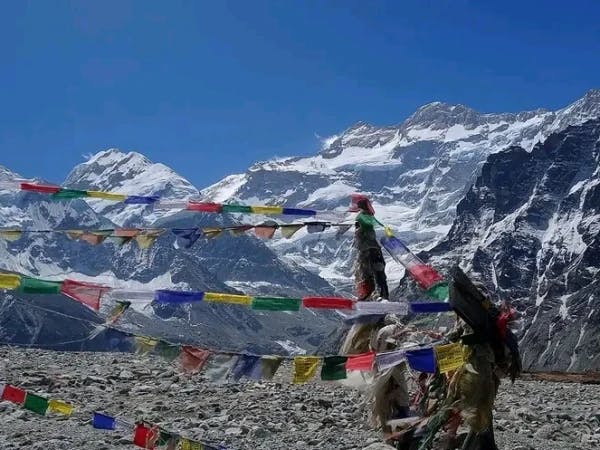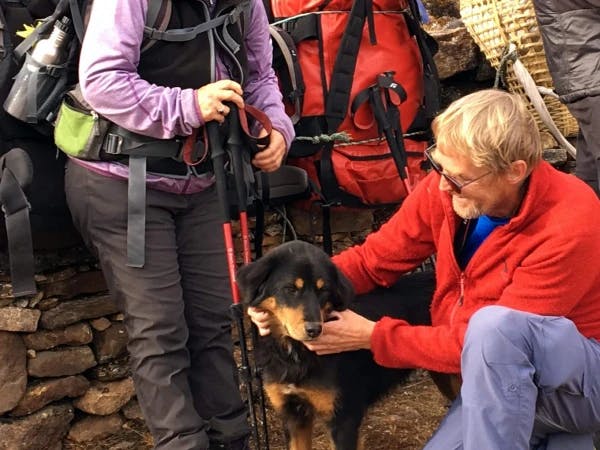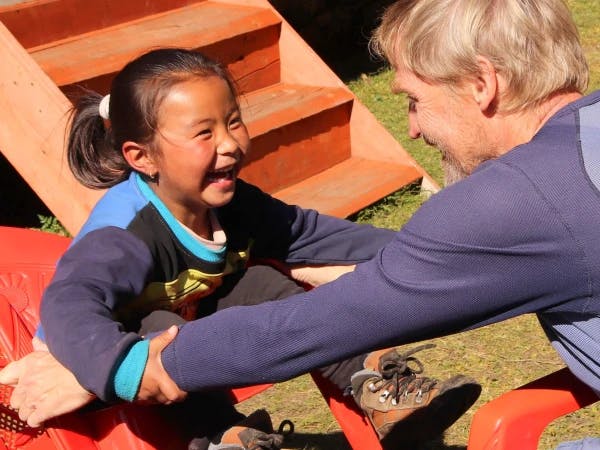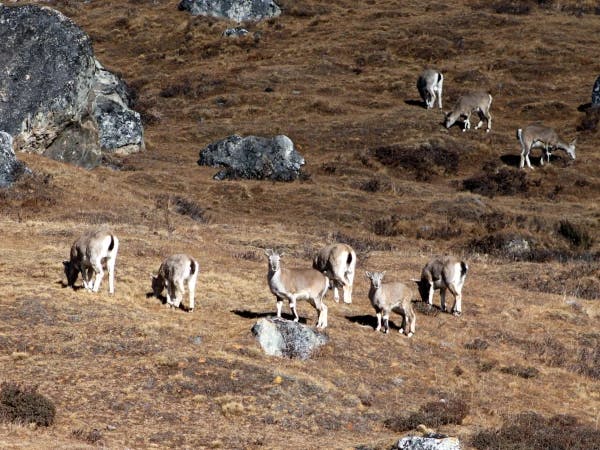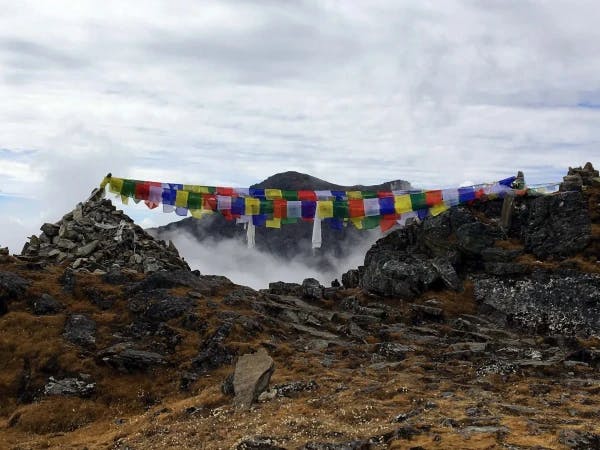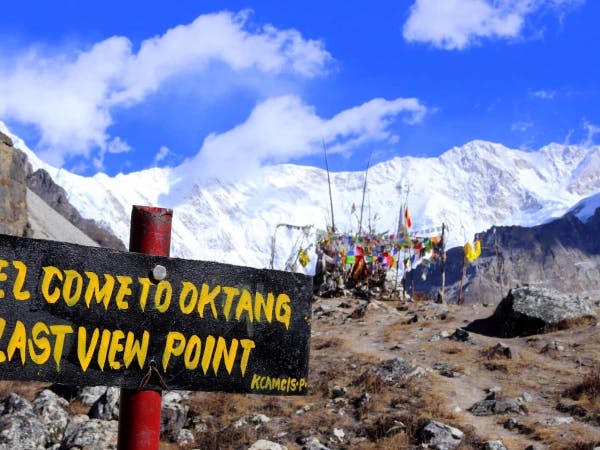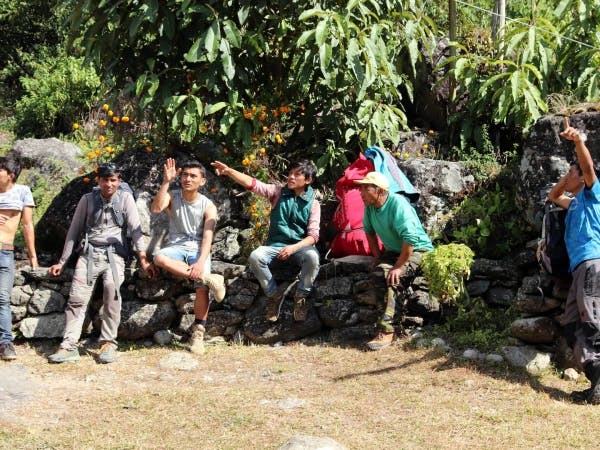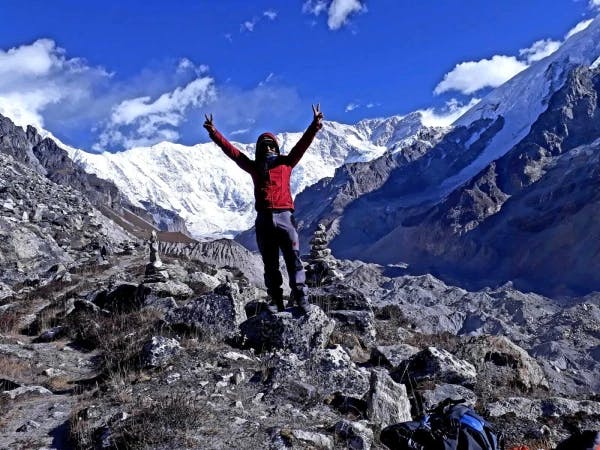The Kanchenjunga South Base Camp Trek is one of those top-notch Himalayan adventures revolving around the south face of the majestic Kanchenjunga Massif. Situated in the eastern region of Nepal, bordering the Indian states of Sikkim and Tibet, which are yet to be exposed to mass tourism, the trekking journey to the Kanchenjunga Base Camp is the ultimate Himalayan exploration to connect to the true essence of nature.
Often referred to as the Yalung Base Camp, the south base camp of Kanchenjunga is elevated at 4,610m at Ramche to slowly make an ascend through pristine woodlands, terraced fields, farms, and traditional tranquil villages, passing through a few sections, some of which are considered landslide-vulnerable areas, usually rugged, requiring a good level of physical fitness and mental preparedness, adding much to the adventure and overall rambling to the Kanchenjunga South Base Camp.
Throughout the odyssey to South Base Camp of Kanchenjunga, sensational snow-capped mountains such as Kanchenjunga Main, Kanchenjunga South, Yalung Kang, Kabru, Rating, and others, along with scenically vibrant landscapes, keep trekkers and travelers excited for each day featuring the lush subtropical lowlands, including rhododendron, oak, and pine, alpine meadows, spectacular glaciers, and a diverse array of flora and fauna conserved under the Kanchenjunga Conservation Area and the World Life Fund (WWF).
En route to the Kanchenjunga South Base Camp, you will get to make your way through the classic Himalayan dwellings of several ethnic indigenous communities of Nepal: Rai, Limbu, Sherpa at the higher elevation, Gurung, and Tamang at the lowland, providing you with a unique and incredible opportunity to see and live the simple yet most fulfilling Himalayan life.
Therefore, Kanchenjunga South Base Camp Trekking towards one of the newly discovered hiking routes in the Kanchenjunga region is a once-in-a-lifetime Himalayan expedition offering unparalleled serene natural beauty and untouched culture born and brought up in the lap of the Himalayas that you can comfortably complete in 15 days with Ammonite Adventures and Treks Pvt. Ltd. offering the best-priced package to go for the expedition in 2024 and 2025.
Highlights
- Delve into the most gorgeous aerial views during the flight from Kathmandu to Bhadrapur, and vice versa.
- It is a sublime feat to be part of the culturally and naturally enriching Kanchenjunga Himalayas.
- Discover one of the less-trodden Himalayan trekking trails in the Nepalese Himalayas.
- Embrace the prime beauty of the third largest mountain on the earth, Mt. Kanchenjunga (8,586 m), close to none other than its own south base camp at 4,160m.
- This is a fantastic opportunity to see some of the Himalayan flora and animals, from common to uncommon, such as the elusive snow leopard, Himalayan blue sheep, tahr, and red pandas.
- Walk across the breathtaking Himalayan glacial lakes, lush forests, flowing waterfalls, and diverse wildlife.
- Travel into one of the major, highly restricted zones of Nepal's Himalayas, etc.
What makes the Kanchenjunga South Base Camp excursion stand out?
Kanchenjunga, translating to the five great treasures in the snow, as represented by five of the awe-inspiring peaks regarded as the vault of five major valuables such as religious books, grains, silver, gold, and jewels, flows interestingly not less than five main glacier systems of the Kanchenjunga Trekking region, including Zumu, Talung, and Rathong to the east and Tamor fed by Yalung and Kanchenjunga glaciers to the west.
Therefore, the name alone of Kanchenjunga distinguishes it from the rest of other hiking experiences in the Himalayas, promising an otherworldly adventure during the trip to the Kanchenjunga South Base Camp, which features:
The less-trodden Himalayan Trekking route
Unlike some of the world's top trek destinations in Nepal, such as Everest Base Camp Voyage, Annapurna Circuit Trail, and Annapurna Base Camp Expedition, the Kanchenjunga region has a limited tourism infrastructure, seeing fewer trekkers through rugged terrain, steep ascends and descends, including some of the landslide-prone areas in the remoteness, ensuring the most pristine natural beauty and cultural immersion, providing an amazing look out at the natives of the region who are still committed to the traditional way of living, cherishing each bond along with the hills, mountains, and nature, even worshipping them as god.
Further, the trekking route leading to the Kanchenjunga South Base Camp is through one of the highly restricted realms of the Nepalese Himalayas, which has helped preserve the regional original beauty, rewarding trekkers with an opportunity to explore the true and unspoiled landscapes and local culture that might have long vanished from some of the other highly infamous hiking trails due to massive commercialization in modern days.
Kanchenjunga Conservation Area’s swankiness in biodiversity
Named after the third-tallest mountain internationally and second-highest peak nationally, Mt. Kanchenjunga (8,586m), the Kanchenjunga Conservation Area is home to a large number of flora and fauna, some of which belong to the list of globally elusive as well, encompassing an area of 2,035 sq. km in Taplejung district to relish during your thrilling trek to the Kanchenjunga South Base Camp.
Characterized by dense forests, alpine meadows, glacial valleys, and high-altitude lakes supporting a wide range of ecosystems and their native plants and animals, the Kanchenjunga Conservation Area is a biodiversity hotspot in the Nepalese Himalayas where you can encounter rare Himalayan species of red panda, snow leopard, Himalayan black bear, and others on your very lucky day.
The real sense of adventure on making it to the south lap of the Kanchenjunga
Elevated at 4,610m above sea level, trekking to the Kanchenjunga South Base Camp grants you the surreal thrill of exploring uncharted territory and conquering the physically demanding terrain, evoking the real spirit of adventure and presenting trekking aspirants and travelers from verdant woodlands and terraced fields to high mountain glacial valleys nestled amidst the snow-covered mountains, captivating the hearts of every nature lover.
The sense of accomplishment for trekkers upon reaching the base camp of one of the world's highest mountain giants, Mt. Kanchenjunga, is significant, serving as a testament to trekkers, climbers, and travelers’s determination and perseverance, equally leaving a lasting impression on the soul of adventure seekers seeking the unmatchable achievement of reaching the foot of the glorifying peak.
Everlasting Dynasty views of the Himalayan panorama
Right on stepping into the Kanchenjunga Trekking region to the eastern part of Nepal, you will get to witness some of the most majestic peaks in the world, while the Kanchenjunga South Base Camp trekking route is predominated by the Kanchenjunga Massif (8,586m) and Kanchenjunga South (8,494m) at the forefront, Yalung Peak/Kanchenjunga West (8,505m), Kabru north and south, Pandim (6,691m), and Jannu (7,710m).
Depending on the weather and visibility of the trekking day, trekkers may also steal a glimpse at the dramatic tallest peaks globally, such as Makalu (8,845m) and Lhotse (8,516 m), including the top of the world, Mt. Everest (8,848 m), on a clear day on the way to the South Base Camp of Kanchenjunga.
Expansive cultural exposure of the Kanchenjunga Trekking region
Whether you are heading to the Kanchenjunga region for a round trip to its circuit or traversing only the North Base Camp or the South Base Camp of the mountain that dominates the area, Mt. Kanchenjunga, you will pass through numerous typical villages and even spend the nights at tea houses and local lodges maintained by the Himalayan natives, promising a heartwarming cultural immersion.
The majority of the natives inhabiting the trekking trail to the South Base Camp of Kanchenjunga are indigenous people of Rai, Limbu, Sherpa, and Tibetan, boasting distinctive dialects, cultures, customs, and traditions.
To experience the first-hand rural life and rich tapestry of Nepal’s cultural heritage, hike along the villages, often adorned with colorful prayer flags, intricate wood carvings, and traditional architecture, where the natural landscape’s beauty is matched by the open heart and genuine hospitality of these local communities when you engage yourself in an interaction on the way to Kanchenjunga South Base Camp.
The 15-day itinerary and route to trek the Kanchenjunga South Base Camp
Among multiple itineraries to go for trekking to the Kanchenjunga South Base Camp, the 15-day route, beginning with a goose-bumping flight over to Bhadrapur from Kathmandu and enjoying the stunning aerial views, is best for a comprehensive enhanced trekking experience that heads to the scenically rich Ilam on the same day, famous for its organic tea garden, and drives to the cardamom-growing district of Nepal, Taplejung the very next day.
From Taplejung onwards, the trek to the South Base Camp of Kanchenjunga officially commences. The trek spends the first ever night at the mountainous lodge of Lalikharka, gradually to the Khesewa, Pumhe Danda, Yamphuding, Torongding, Cheram, and finally to the Ramche, exposing the south base camp of Kanchenjunga for trekkers and travelers across the world, rambling 6-7 hours each day through a mixture of each type of terrain, some flats and a and a few steep ascents and descents.
On making it to the adventurous high altitude of the Kanchenjunga South Base Camp at Ramche, you will simultaneously hike down to Torongding via the same route you used to ascend that continues up to Yamaphuding, where the previous trekking route diverges, while you will board one leading to Khebang, eventually making it to Kamdime, which later on drives to Bhadrapur, while the 15-day package by Ammonite Adventures and Treks comes to an end as you fly back to Kathmandu.
Wonderfully, like any other trekking destination in Nepal, Kanchenjunga South Base Camp also provides several itineraries and routes to explore the region. A 15-day package is one of our well-crafted journeys that can be customized as per the needs and preferences of trekkers and travelers. Contact us now to get your tailored-made expedition to the Kanchenjunga South Base Camp explicitly created for you.
How much does it cost you to trek the Kanchenjunga South Base Camp?
Similar to any other high Himalayan trekking, such as the long expedition to the Manaslu Circuit or the short hike to Ghorepani Poon Hill, the cost of reaching the South Base Camp can also vary depending on several deciding factors, such as the length of the trek, the specific route of your preference, the time of the year you are traversing, and the level of services you have chosen in meal and accommodation, including the guides, porters, permits, and equipment rentals.
Nonetheless, at Ammonite Adventures and Treks, we offer the best price available, including a special group discount ranging from USD 1,800 to USD 2,000 or above that covers the expenses of most of the logistics, along with the domestic flight to and from Bhardrapur, in addition to the above-mentioned aspects.




